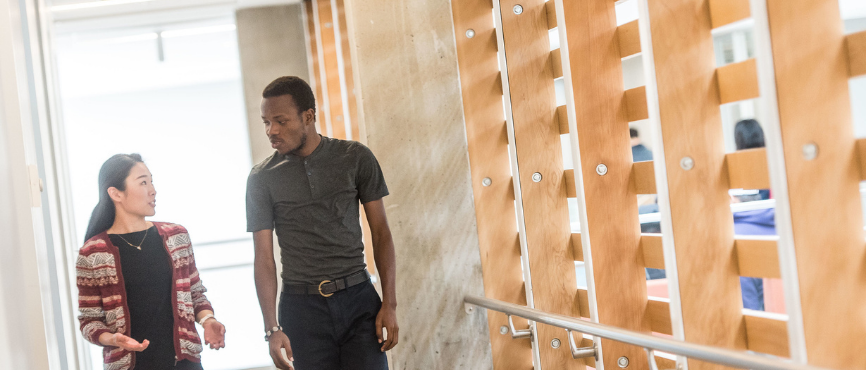
There is nothing “micro” about the impacts of microaggressions. Microaggressions are everyday slights and insults that communicate negative messages to target marginalized groups, often on a subconscious level.
UBC prides itself on its commitment to diversity. An important part of meaningful diversity is being a community where people feel supported and welcomed and where our differences are respected and embraced. Addressing microaggressions is a crucial step to helping all students, faculty, and staff thrive to their full potential.
People experience microaggressions differently based on their intersectional identities. In this article we will focus on racial microaggression and what it could look like in everyday life.
Why are microaggressions harmful?
A key part of what makes microaggressions so dangerous is that they happen casually, frequently, and often without any harm intended, in everyday life — at school, in the workplace, at the supermarket, or even within friend groups.
Dr. Derald Wing Sue, an author and professor of psychology at Columbia Teacher’s College, on microaggressions in everyday life
In this video, Dr. Derald Wing Sue, professor of Psychology and Education at Teacher’s College Columbia University and author of two books on microaggressions, provides an overview of common microaggressions and the harmful impacts they have on marginalized groups in our society.
Some examples of seemingly harmless acts, statements or questions that perpetuate negative stereotypes and undermine the lived experiences of marginalized groups, include:
- “Where are you from?”, “You speak good English.” – assuming a person of colour is foreign-born and reinforcing the message that they do not belong.
- “When I see you, I don’t see colour.”, “There is only one race, the human race.” – dismissing the racialized experiences of a person of colour and downplaying occurrences of racism.
- “Everyone can succeed in society if they work hard enough.” – denying that race and systemic racism plays a role in people’s success in life and signaling that the disparate outcome for people of colour result from laziness or incompetency.
- Asking a Black person: “Why do you have to be so loud?”, or asking an Asian person: “Why aren’t you more verbal?” – acting upon a belief that the values and cultural norms of the dominant White culture are ideal.
Microaggressions can be delivered also through unconscious behaviors or gestures.
- Clutching onto valuable belongings when an IBPOC approaches – suggesting a person is more likely to be involved in criminal activity based on their race.
- Mistaking a person of colour for a service worker – reinforcing the belief that people of colour can’t occupy high-status positions and are meant to serve white people.
For more real world examples of microaggression, this table from the School of Public Health, University of Minnesota showcases many different kinds of racial microaggression in everyday life.
What do you do if you commit a microaggression?
Due to their pervasive yet subtle nature, microaggressions can be difficult and emotionally draining to confront. For racialized groups, the repeated experience of having to question their right to feel offended and the constant reminder that they are neither welcomed nor safe, can lead to physical and mental health concerns.
The tricky thing about microaggressions is that they are mostly unconscious biases and sometimes it takes another to point them out to you. When you are confronted about it or realize that you may have committed a microaggression, here are several steps to take.
1. Own up to your mistake and listen attentively
Everyone has committed microaggressions, consciously or not. When someone confronts you on your behavior, replace your instinctive defensiveness with empathy and curiosity. Avoid saying, “I was just joking,”, or “Don’t be so sensitive.” Listen to what the other person has to say and validate their experience — your priority is to make them feel heard.
2. Apologize
The next step is to offer a genuine apology that acknowledges the impact and harm your comment caused.
An example: “Thank you for sharing that with me. It is not my intention but I appreciate you trust me enough to share this feedback. I am sorry that what I said or did was offensive.”
3. Seek to understand on your own time and keep working on it
Recognize that becoming an anti-racist person takes hard work and treat this as your own learning opportunity. No one is immune from inheriting racial, gender, and sexual orientation biases. Examine your own personal biases and consider how they might hurt others. Be mindful of subtle messages, as well as where, when, and how you ask questions about someone’s identity.
Listen, amplify, advocate
Microaggressions are important to address. While the acts are subtle, their impact is deep and pervasive. The best way to educate yourself is by listening to those most oppressed, ignored, and silenced, as well as interacting with people who differ from you in terms of race, ethnicity, and culture. Through reflection and education, our goal is to make the invisible visible and eliminate barriers to equity, diversity, and inclusion — one at a time.
Stay tuned for our next article on effective ways to respond to microaggressions.
Below are more helpful resources to learn more about microaggressions: